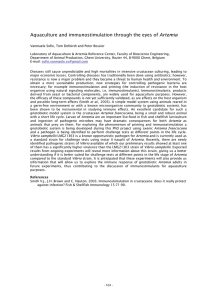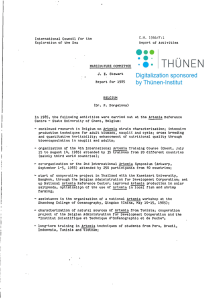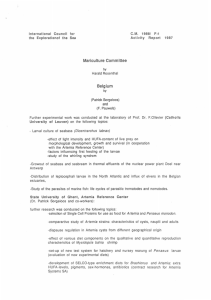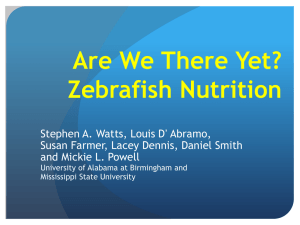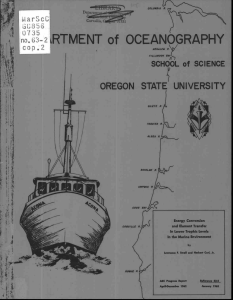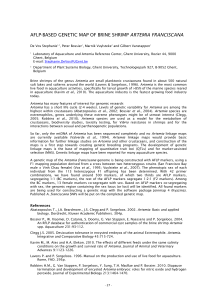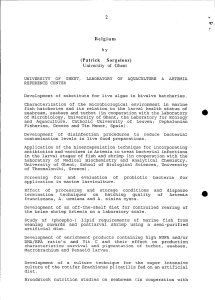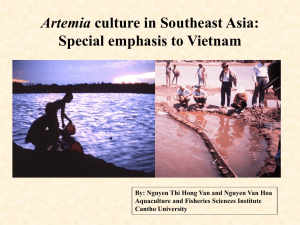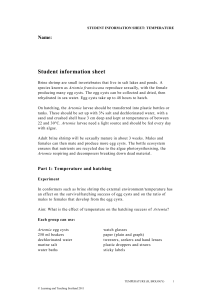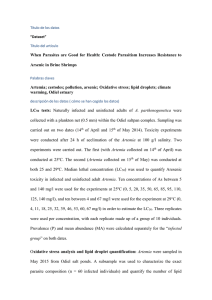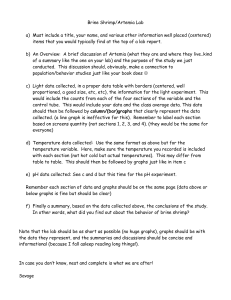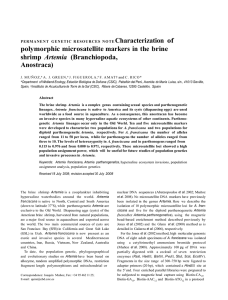qo ·
advertisement
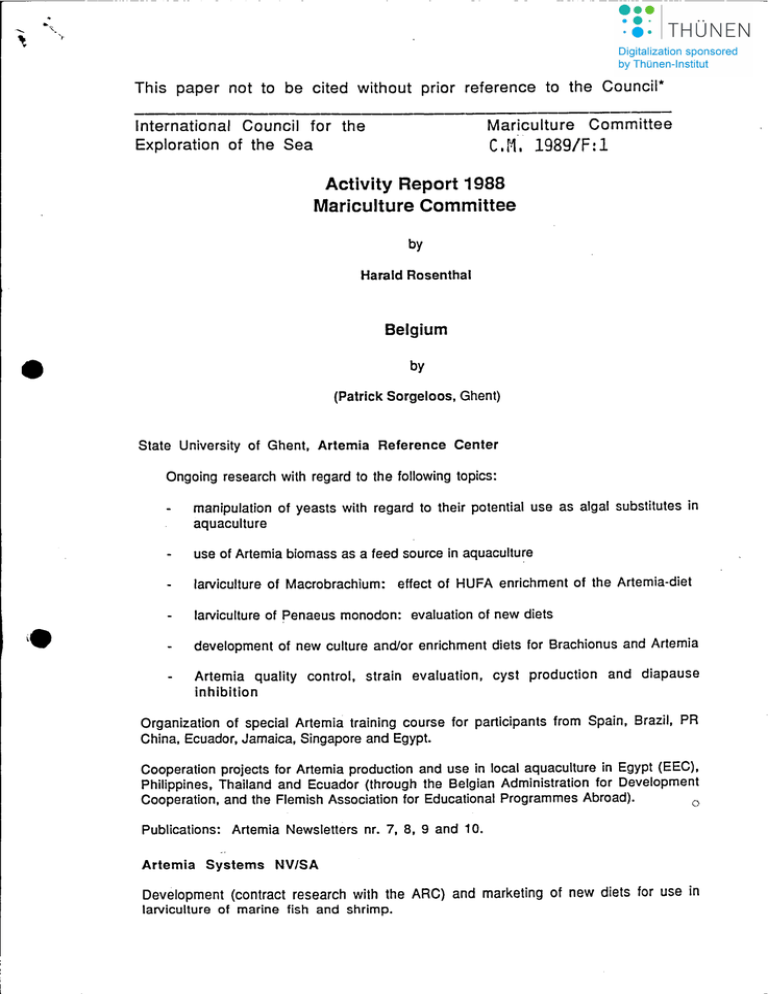
------ - - - - I · a.'\\... ',. qo This paper not to be cited without prior reference to the Council* Mariculture Committee International Council for the Exploration of the Sea C,M. 1989/F:l Activity Report 1988 Mariculture Committee by Harald RosenthaI Belgium by (Patrick Sorgeloos, Ghent) State University of Ghent, Artemia Reference Center Ongoing research with regard to the following topics: manipulation of yeasts with regard to their potential use as algal substitutes in aquaculture use of Artemia biomass as a feed source in aquaculture larviculture of Macrobrachium: effect of HUFA enrichment of the Artemia-diet larviculture of Penaeus monodon: evaluation of new diets development of new culture anci/or enrichment diets for Brachionus and Artemia Artemia quality control, strain evaluation, cyst production and diapause inhibition Organization of special Artemia training course for participants from Spain, Brazil, PR China, Ecuador, Jamaica, Singapore and Egypt. Cooperation projects for Artemia production and use in local aquaculture in Egypt (EEC), Philippines, Thailand and Ecuador (through the Belgian Administration for Development Cooperation, and the Flemish Association for Educational Programmes Abroad). o Publications: Artemia Newsletters nr. 7, 8, 9 and 10. Artemia Systems NV/SA Development (contract research with the ARC) and marketing of new diets for use in larviculture of marine fish and shrimp. ~ /.A I ! 2 Catholic University of Leuven, Laboratory for Ecology and Aquaculture Ongoing research with regard to the following studies with sea bass: experimental production of 9,000 larvae; main topics of research were the influence of dietary highly unsaturated fatty acids and light intensity on growth, survival and morphological development (malformations such as shorted operculae and lordosis); larval survival rates varied between 12% and 29%. the influence of various physical and chemical variables on growth of sea bass fingerlings the effect of protein and fat content in the diet on growth and body composition (fat, proteins, dry weight) of sea bass fingerlings. Nuclear Power Plant at Ooel More than 300 kg of sea bass have been produced at the pilot plant for fish farming at the nuclear power plant. Experiments were also performed on the influence of protein and fat content in the diet on growth and body composition of sea bass fingerlings. Canada by (8. Cook, S1. Andrews) Atlantic Canada New Brunswick DEPARTMENT OF FISHERIES AND OCEANS Salmonjds Physiology At the St. Andrews Biological Station, a preliminary experiment compared growth of Atlantic salmon parr at late-summer thermal ranges (18°-12°C). There was no difference in growth between groups held in water at normal oxygen levels (75-85% of air saturation) and high levels (125%). Further studies will be conducted at temperatures which usually inhibit feeding and growth (20°-24°C). Researchers at the St. Andrews Biological Station are investigating the development of salinity tolerance in Atlantic salmon parr in early winter to leam if it is indicative of smolt status and long-term survival following transfer of these fish to sea water during autumn-early winter. Preliminary studies suggest that, although large parr may survive abrupt transfer to sea water in autumn, smolting is not complete untit the following spring. •
